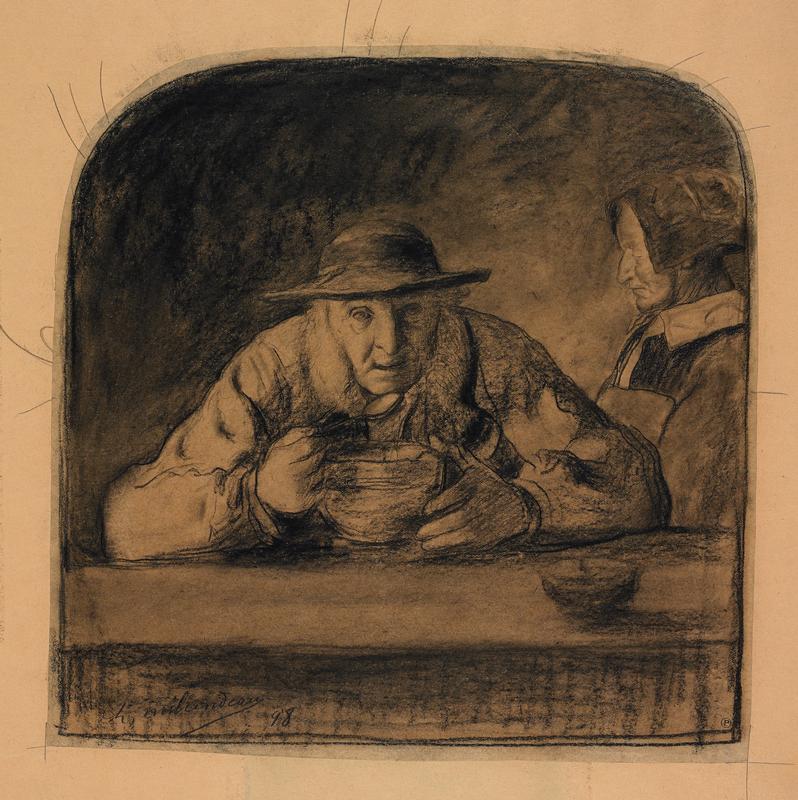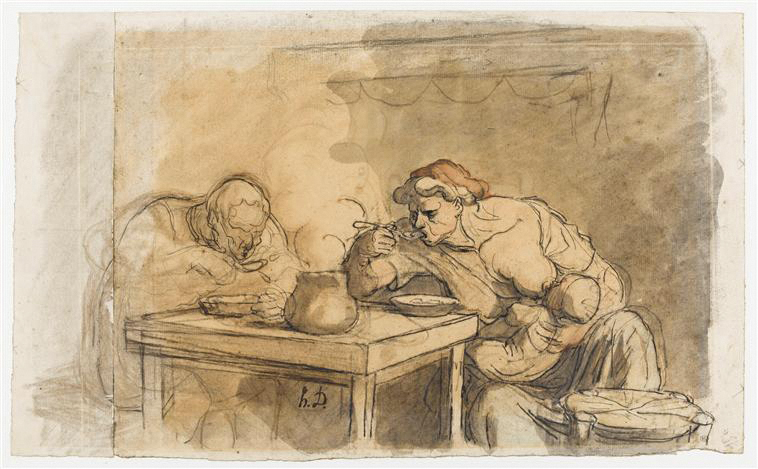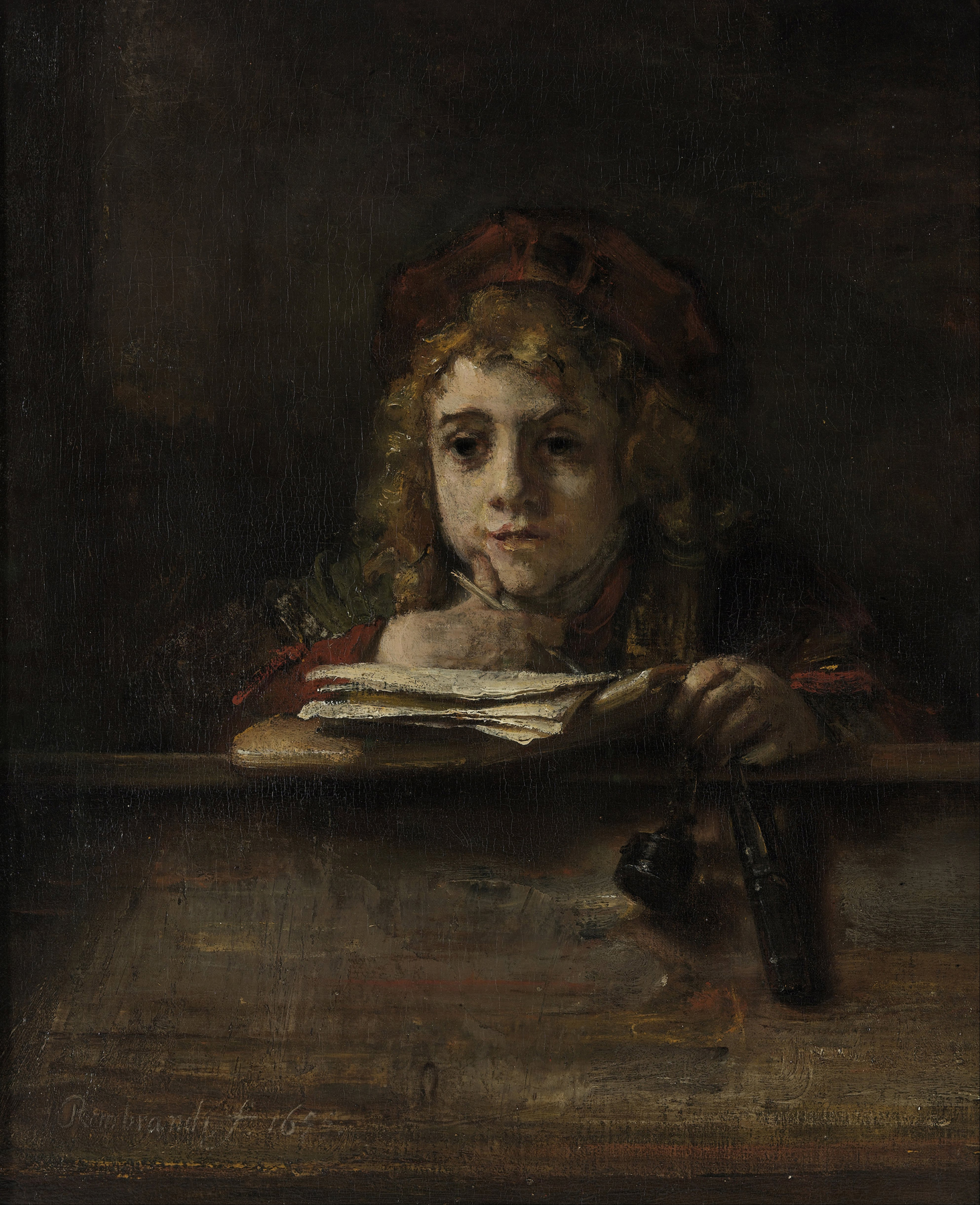
131. Charles Milcendeau, Blind Man Eating His Soup
| Artist | Charles Milcendeau, French, Soullans, Vendée 1872–Soullans, Vendée 1919 |
| Title, Date | Blind Man Eating His Soup (La soupe), 1898 |
| Medium | Charcoal on tan paper |
| Dimensions | 10 × 10 in. (25.4 × 25.4 cm) |
| Inscriptions + Marks | Lower left: Ch. Milcendeau / 98 | Lower right: collectors’ mark of Véronique and Louis-Antoine Prat (Lugt 3517 or 3618) [P in a circle] |
| Provenance | Joachim Carvallo, 1869–1936, Paris, until 1928; Véronique (née Bardon) and Louis-Antoine Prat (born 1944), Paris. [Galerie Paul Prouté, Paris, until 1993; to Weisberg]; Yvonne and Gabriel Weisberg, Minneapolis |
| Exhibition History | "Exposition rétrospective Charles Milcendeau 1872–1919: Peintures, dessins, gouaches, pastels, aquarelles," Galeries Georges Petit, Paris, February 13–28, 1928, no. 127; Galerie Paul Prouté, Paris, 1990, no. 94; "Milcendeau, le maître des regards," Historial de la Vendée, Les Lucs-sur-Boulogne, France, 2012; "Reflections on Reality: Drawings and Paintings from the Weisberg Collection," Mia, 2022–23 |
| References | Christophe Vital, ed., "Charles Milcendeau 1872–1919: Sa vie, son oeuvre" (Milan: Silvana Editoriale, 2012), pp. 16, 289, no. 5, ill. |
| Credit Line | Promised gift of Gabriel P. and Yvonne M.L. Weisberg, Minneapolis |
Although his drawing may give the impression that Charles Milcendeau was largely self-taught, the truth is quite different. He trained at the Académie Julian in Paris with Jules Lefebvre and received encouragement from Gustave Moreau. He also studied and absorbed compositions by Honoré Daumier (fig. 1),1 whose lithographs (if not his paintings) were deeply appreciated in the 1890s. Exactly where Milcendeau saw Daumier’s work is unknown, but it could have been in the holdings of the Bibliothèque nationale in Paris or private collectors.


A possible direct inspiration for the present work is Rembrandt’s portrait of his son Titus seated at his desk, from 1655 (fig. 2). Milcendeau may have taken the dark palette, pyramidal composition, and broad treatment of the foreground table from this painting. It may be no coincidence that in 1898, the year of Milcendeau’s drawing, the portrait of Titus appeared in a major exhibition of Rembrandt’s work in Amsterdam.2
Regardless of Milcendeau’s sources, it seems clear that earlier masters held continuing importance for him. He was able to amalgamate these influences into this moving composition, which remains unique in the artist’s body of work. The empty eyes of the sitter suggest that he is blind. The woman seated behind him may signify those who quietly care for people in need, while receiving little recognition.
GPW
Notes
Late in Milcendeau’s lifetime, Daumier’s La soupe was in the collection of composer Jacques-Michel de Zoubaloff (1876–1941), but we do not know its whereabouts in the later 1890s. ↩︎
Rembrandt. Schilderijen bijeengebracht ter gelegenheid van de inhuldiging van Hare Majesteit Koningin Wilhelmina, September 8–October 31, 1898, Stedelijk Museum, Amsterdam. ↩︎